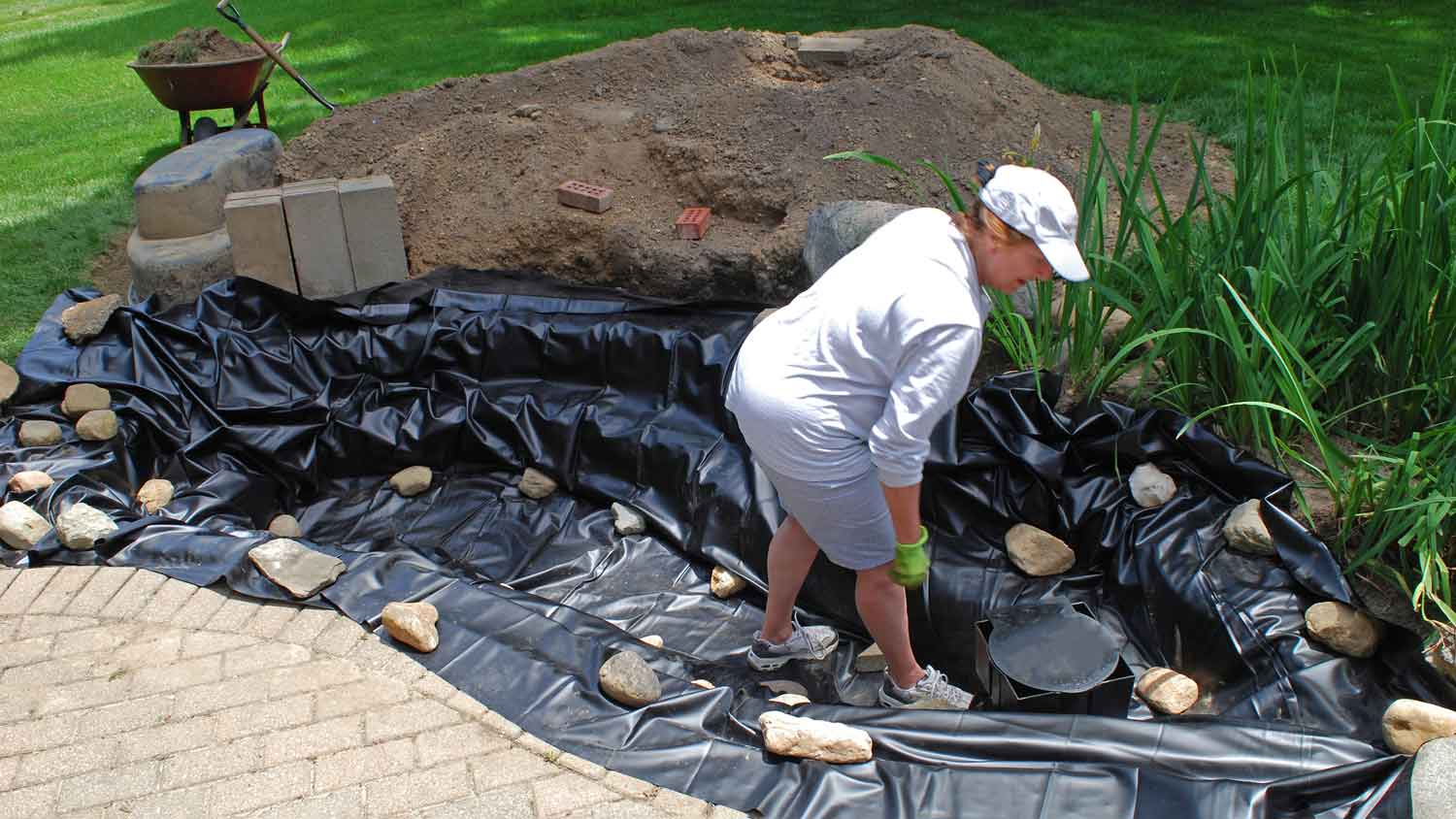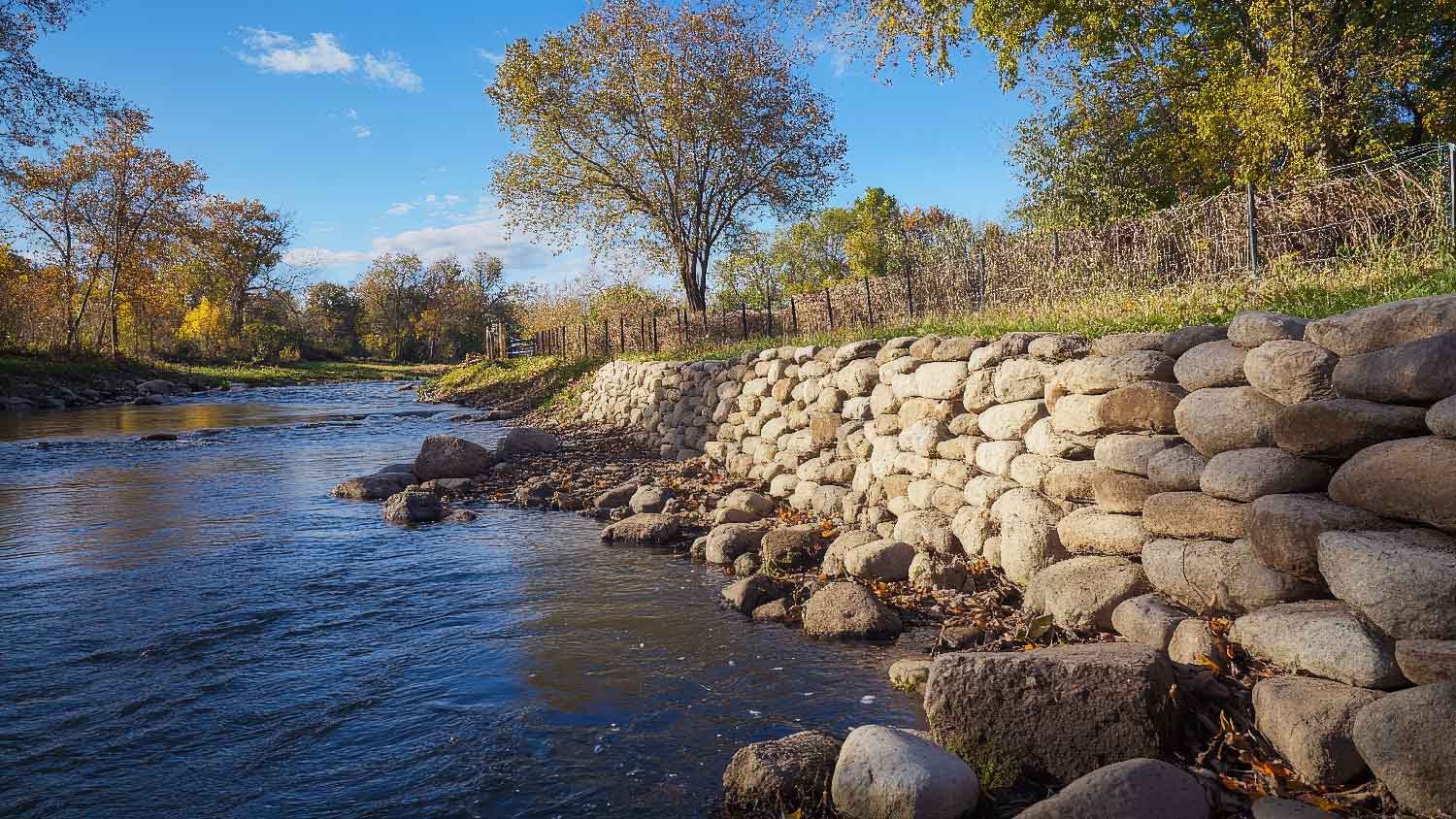
Xeriscape costs depend on materials, the size of your yard, and if you DIY. This guide will help you determine what your xeriscaping project will cost.


To find the right size pond liner, measure your pond’s length, width, and depth.
Decide how much you want the liner to overlap the edges of your pond.
Those numbers will help you calculate what size pond liner you need.
Adding a pond to your backyard can totally transform the way you unwind at the end of the day. But before you can kick back and enjoy the serenity of your new water feature, you’ll need to decide on a few details, including what size pond liner you need. This pond liner calculator can help you figure that out.

Your pond’s size directly affects the size of your pond liner. When deciding which size pond liner to buy, you’ll factor in the pond’s length, width, and depth, as well as the amount of overhang material you’ll need. We’ll break down those factors in more detail later.
For now, let’s look at some example pond liner sizes based on some standard koi pond sizes. We’ll assume you’re ordering two feet of overhang material as well.
| Pond Length and Width | Pond Depth (in Feet) | Pond Liner Length and Width |
|---|---|---|
| 4 ft. x 3 ft. | 3 ft. | 10 ft. x 11 ft. |
| 4 ft. x 6 ft. | 3 ft. | 10 ft. x 14 ft. |
| 8 ft. x 6 ft. | 3 ft. | 16 ft. x 14 ft. |
| 8 ft. x 7 ft. | 3 ft. | 16 ft. x 15 ft. |
| 9 ft. x 12 ft. | 3 ft. | 17 ft. x 20 ft. |
| 12 ft. x 4 ft. | 4 ft. | 20 ft. x 10 ft. |
| 20 ft. x 8 ft. | 4 ft. | 28 ft. x 16 ft. |
| 30 ft. x 6 ft. | 4 ft. | 38 ft. x 14 ft. |

To calculate the right pond size liner, you’ll need to measure your pond’s maximum length, width, and depth. The liner should also overhang each side of the pond by at least a foot—but if you have a deeper pond, you might want to plan for a couple of feet of overhang.
Once you have those measurements, plug them into the following formulas to get the length and width of your pond liner:
Pond Liner Length = Pond Length + (2 x Pond Depth) + Amount of Overhang
Pond Liner Width = Pond Width + (2 x Pond Depth) + Amount of Overhang
For example, let’s say you’re building a pond that’s 10 feet long, 6 feet wide, and 3 feet deep. You also want 2 feet of overhang—or 1 foot on each side—on both the length and width of the pond. In that case, you’d need an 18-by-14-foot pond liner.
After you dig out the space for your pond, you should measure it in several places to figure out which size liner to buy. Ask someone to help you, then follow these steps to get your pond liner measurements:
To get the maximum length, use a tape measure to measure (in feet) across the longest length of the pond.
To find the maximum weight, measure across the widest width of the pond.
To determine the maximum depth, find the deepest part of the pond. Measure upward from that point to the edge of the pond.
Be sure to account for overhang, too. Your liner should extend 1 to 2 feet past each edge of your pond.
Installing a pond liner is a vital part of any pond-building project. If you’re an intermediate-level DIYer, you should be able to design and build a pond in one weekend.
However, if you’re hesitant to measure, buy, and install a pond liner yourself, you can have a professional handle that part of the job. Of course, you can also have a pro create an entire pond from scratch. Whether you bring in someone just to install the liner or you hire someone to build the pond, you’ll pay $50 to $200 per hour for labor.
From average costs to expert advice, get all the answers you need to get your job done.

Xeriscape costs depend on materials, the size of your yard, and if you DIY. This guide will help you determine what your xeriscaping project will cost.

Leveling your yard can help with drainage and prevent damage to your home. Learn the cost to level a yard in Columbus, OH, and what factors can affect the price.

Growing plants with a hydroponic gardening water system can be a big investment. To know how much it costs to build a hydroponic garden, consider the system, technology, size, and whether you hire a pro. This guide will help calculate costs.

Looking to build flood and erosion resilience on your land? Review this guide for riprap costs that will stabilize your shorefront property.

While it’s possible to DIY build a retaining wall, several pros have advanced knowledge of hardscaping and building. Learn who to hire to build a retaining wall.

Riprap prevents erosion and protects your shoreline when done right. Learn who to hire for riprap and how to find a licensed professional.